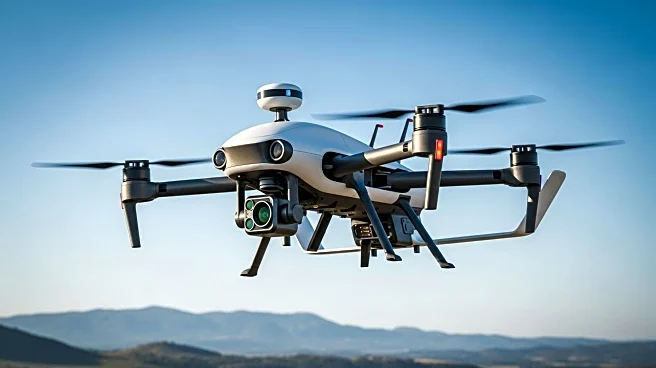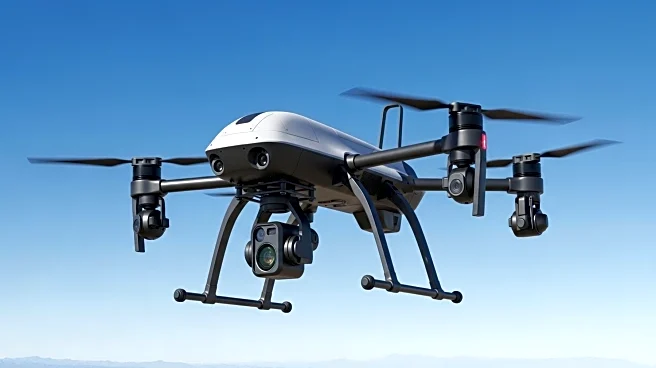What is the story about?
What's Happening?
Anduril Industries has introduced EagleEye, a modular AI-powered system designed to integrate various aspects of battlefield operations into a unified platform. Building upon the U.S. Army's Soldier Borne Mission Command (SBMC) program, EagleEye aims to streamline mission planning and enhance the perception and control of unmanned assets. The system reduces both the physical load carried by soldiers and the cognitive demands placed upon them by integrating mission command software with a heads-up display (HUD) and helmet-based equipment. This integration ensures equilibrium, safety, and efficiency in combat situations. EagleEye features a high-resolution 3D sand table for collaborative mission rehearsal and coordination, and it utilizes Anduril's Lattice network to merge real-time data from distributed sensors across the battlefield, enabling threat detection even when visibility is compromised.
Why It's Important?
The introduction of EagleEye represents a significant advancement in military technology, potentially transforming how soldiers engage in combat and manage battlefield operations. By reducing physical and cognitive burdens, the system enhances soldiers' situational awareness and decision-making capabilities, which could lead to more effective and safer military engagements. The integration of commercial technologies from partners like Meta and Qualcomm aims to lower costs and accelerate development, making advanced military technology more accessible. This development could shift the dynamics of military operations, providing the U.S. Army with a technological edge in both domestic and international contexts.
What's Next?
Anduril has secured a $159 million contract from the U.S. Army to develop an advanced helmet-mounted night vision and mixed reality system, marking the beginning of a prototyping phase. This phase will likely focus on refining the EagleEye system's capabilities and ensuring its effectiveness in various combat scenarios. As the system is further developed, it may lead to broader adoption across different branches of the military, potentially influencing future military strategies and equipment standards. Stakeholders, including military leaders and technology partners, will be closely monitoring the system's performance and integration into existing military frameworks.
Beyond the Headlines
The EagleEye system's introduction raises ethical and strategic questions about the role of AI in military operations. As AI becomes more integrated into combat scenarios, discussions around the autonomy of machines and the potential for reduced human oversight in critical decisions will likely intensify. Additionally, the collaboration between defense and commercial technology sectors may lead to new regulatory and policy considerations regarding the use of civilian technologies in military applications.
AI Generated Content
Do you find this article useful?













